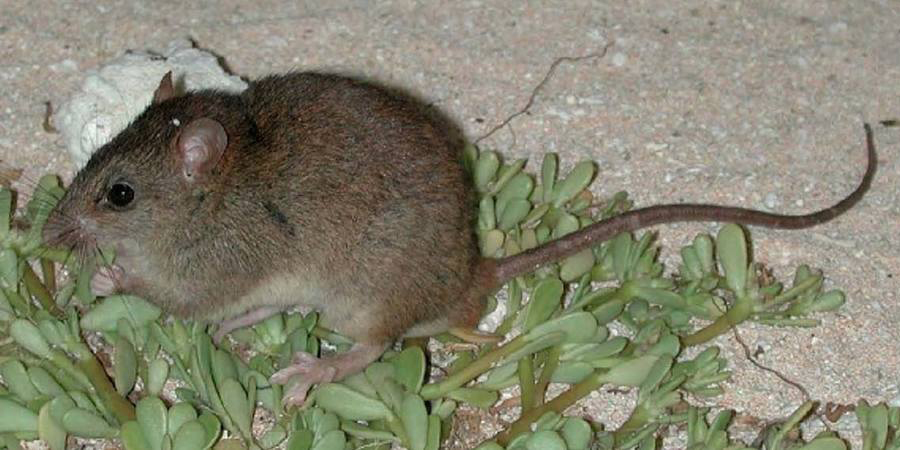Melting glaciers, floods, and a whole lot of climate change denial; headlines you’re bound to come across every week, on just about every major news platform there is. Somewhat numb to these particular stories (due to their excessive frequency), I kept on browsing for something different- anything different that would catch my eye. Needless to say, it wasn’t too long before I found it.
According to an article published on June 13th by The Guardian, scientists have recorded what they believe to be, the first mammalian extinction primarily caused by anthropogenic (human-induced) climate change. The Bramble Cay melomys (Pictured Below), was an endemic species only found in the northernmost part of Australia, on Bamble Cay island. According to the article, the mammal disappeared from its only known habitat in 2009 and extensive searches conducted in 2014 revealed that the Bramble Cay melomys had indeed gone extinct.

Now you may ask how they know for a fact that climate change led to this presumed extinction? After all, animals that small could have been killed off by one of many things. Well, the article specifically cites sea level rise as having inundated Bamble Cay so much that its carrying capacity for the rodents was drastically reduced. In fact, it goes on to say that 97% of land critical to the melomys’ survival is believed to have been destroyed by the encroaching tides. You may also be wondering how we know for a fact that humans had anything to do with the sea level rise to begin with? Well, there have been numerous studies/experiments/tests that have shown a strong correlation between certain human activities and the rate of land based glacial melt and oceanic warming, both of which lead to sea level rise. If you don’t believe me, you can read about it here, or here or here. In fact, you can even find more information here, here and here.
Point is, climate change is real, its impacting a lot of vulnerable organisms and its affecting us even if we don’t want to believe that it is. Sure, the Bamble Cay melomys is, was a rodent not particularly dear to many people’s hearts but, we should seriously start thinking about what will be next on the extinction list if we continue living a business as usual lifestyle. Polar bears? Penguins? Will we care then, if ever at all?
So… what do we do?
There is a common misconception that only policymakers and world leaders can make meaningful strides toward reducing the rate and effects of climate change. Similarly, many people believe that grandiose strategies and treaties are the only effective ways of mitigating this planetary destruction, and that anything less than such is a futile waste of time. However, I think that such claims are not only misleading, but often serve as “rational” justifications for people to give up being responsible and environmentally conscious citizens. The truth is, that small actions can and do make a difference, its only that not enough people are doing them. Given that Greenhouse Gasses (especially CO2) are the single most potent human-induced driver of climate change, any actions taken to reduce their release into the atmosphere are critical in mitigating the rate of climate change.
That being said, here are three small things that you can do to make a difference this summer:
- Invest in a reusable water bottle- According to Ban the Bottle, the US used 50 billion disposable water bottles last year and only ~23% were recycled. Instead of buying spring water in disposable plastic bottles, buy a reusable bottle and refill it as you please. Not only will this save you money in the long run, but a reduced demand for and production of disposable water bottles will result in a marked reduction in GHGs released during the manufacture, transportation and disposal of such bottles. Here is a website where you can get inexpensive, durable and reusable water bottles. Or you could just try Amazon.
- Optimize your air conditioning– if you have an AC unit/ thermostat, the Department of Energy has released some useful information about optimal temperature settings for different seasons. This will help you save $$ on your electricity bill and significantly lower your carbon footprint.
- Turn off unnecessary lights and appliances- this should be a no brainer. The more appliances you have switched on =>the more electricity you use =>the more GHGs released making that electricity. Here’s a few energy/money saving tips that may help you out.
At the end of the day, its all about collective action. If everybody committed to being just a bit more conscious of their unsustainable actions and took these small and easy steps, we would undoubtedly join the fight in mitigating climate change and maybe, just maybe, postpone the death sentence we have unduly given to our endangered species.
Written by Adil Nyambasha, Class of 2018
Photo Source: Pixabay (By Angie Agostino)

